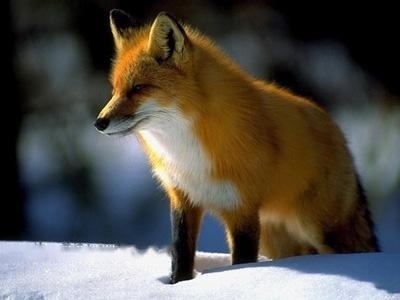
Red Fox
Mating between January and February every year, male foxes fight fiercely for female foxes. The gestation period is about 2 months, and the male and female jointly raise the cubs,
Origin: Japan
Japanese big-eared rabbits are actually white rabbits that grow in Japan, so they are also called Japanese white rabbits. It is a cross between Chinese white rabbits and Japanese white rabbits, but there is no way to verify, Japanese big-eared rabbits are relatively common Variety, mainly used for economic production.
Chinese name: Japanese big-eared rabbit
Alias: Japanese white rabbit
Kingdom: Animalia
phylum: Chordate
Class: Mammalia
Order: Lagomorpha
Family: Lagoidae
Genus: Lagos
Species: Japanese Big-eared RabbitDistribution: Native to Japan, it is said that it was bred by crossing the white rabbit of the Chinese rabbit and the Japanese rabbit.
Reproduction: Viviparous, with an annual output of 5 to 7 litters, with 8 to 10 litters per litter, with a maximum of 17 litters.
Habits and characteristics: early maturity, fast growth, resistance to rough feeding; good motherhood, strong fecundity, often used as a "nanny rabbit" with good meat quality and excellent skin quality. The main disadvantage is that the skeleton is large, the carcass is not full enough, and the slaughter rate and net meat rate are low.
Japanese big-eared rabbits are famous for their large ears and clear blood vessels, which are ideal for experimental use. rabbit. The coat is tight, pure white in color, and has a lot of needle hair; the eyes are red, the ears are large and erect, the ears are thin at the roots, and the ears are pointed at the tip, like a willow leaf; the female rabbit has a beard under the jaw.
Most maps in China have large temperature differences between four seasons, which is also a great test for the breeding industry. Different seasons, different temperatures, and different maintenance priorities have very different ways of coping. The following is an introduction based on different seasons.
First, pay attention to the cleanliness of the environment in spring
In spring, due to the high rainfall and high humidity, it is extremely beneficial to the reproduction of bacteria, so we must do a good job of cages Clean and hygienic, make the cage clean and dry, and clean, clean, wash, and disinfect frequently. When the ground humidity is high, plant ash or quicklime can be sprinkled for disinfection and sterilization.
Second, pay attention to cooling in summer
The rabbit house in summer should be cool and ventilated, and the sun should not be directly irradiated on the rabbit cage. When the temperature exceeds 30 °C, the ground can be splashed with water to cool down; the open-air rabbit farm should build a pergola in time, and plant climbing plants such as melons and grapes as soon as possible. and moisture-proof.
Three, pay attention to extreme weather in autumn
The temperature difference between morning and evening and noon in autumn is large, and young rabbits are prone to colds, enteritis, pneumonia and other diseases. Therefore, it must be carefully managed, and the group rabbits should be rushed back indoors every evening, and they should not be allowed to play in the open air in case of strong wind or rain.
Fourth, pay attention to keep warm in winter
The temperature of the rabbit house in winter, except for newborn rabbits, does not require very warm, but the temperature should be kept relatively stable , Do not be hot and cold. Indoor caged rabbits should close the doors and windows to prevent the invasion of thieves. When raising rabbits in outdoor cages, the cage door should be hung with straw curtains to prevent cold wind from invading, and the bottom of the cage can be covered with grass or other materials for insulation.
There are many kinds of feeds for Japanese big-eared rabbits, and the way of raising commercial rabbits is the same as Pet rabbits are very different, and commercial rabbits are usually raised in a more extensive way, so Commercial rabbits usually use breeds that are relatively resistant to roughage, Japanese big-eared rabbits It is a better commercial rabbit breed.
First, green feed
More water, less fiber, rich in protein, vitamins and minerals, relatively complete nutritional value, strong palatability, Easy to digest, it is the basic feed for raising rabbits. Divided into many kinds, including cultivated pastures, aquatic plants, weeds, wild vegetables, green leaves and vegetable leaves.
Second, juicy feed
Including various tubers, melons, etc. Juicy feed is rich in water, with a water content of 75-90%, low in crude fiber and high in starch, low in protein content, only 1-2%, rich in potassium but deficient in calcium and phosphorus, and high in nitrogen-free extracts.
Three, roughage
It is characterized by low nutrition, high crude fiber content, and low protein and vitamin content. But maintaining a certain amount of crude fiber is conducive to the normal activities of the rabbit's digestive function.
IV. Concentrated feed
Including seed feed and processing by-products. Seed feed, mainly corn, barley, wheat, oats, rice and other gramineous plants, contains a large amount of nitrogen-free extracts, mainly starch. Processing by-products include soybean cake, oil residue, rice bran, soybean skin, powder residue, soybean residue, etc. These are good feeds for feeding rabbits, which are characterized by high nutritional value.
V. Animal feeds
This type of feed mainly refers to by-products of milk and dairy industry, by-products of fishery processing and fortifications, and by-products of meat processing. Features: high protein content.
VI. Minerals
Refers to the feed used to supplement the mineral deficiencies in the feed. The mineral elements required in the nutritional process of the rabbit body, generally natural feed can meet the needs of the rabbit, especially a large number of legumes are less prone to mineral deficiencies.